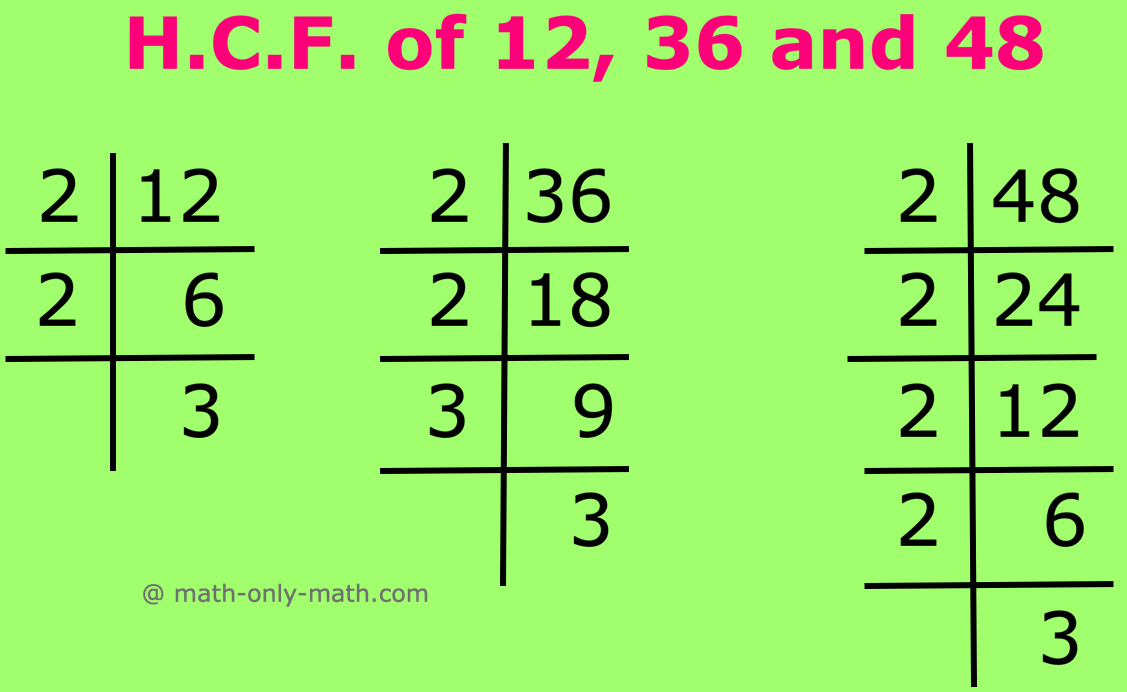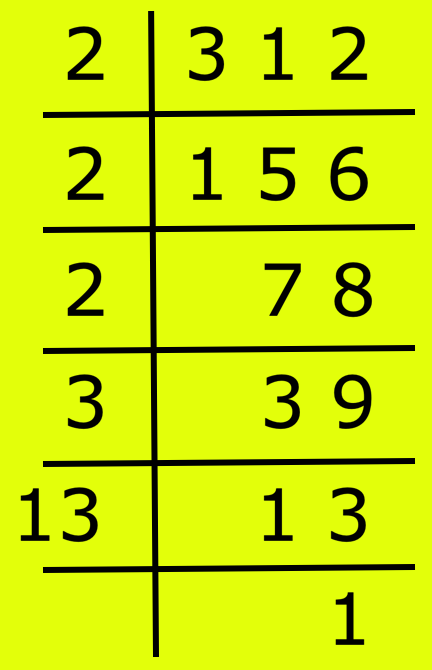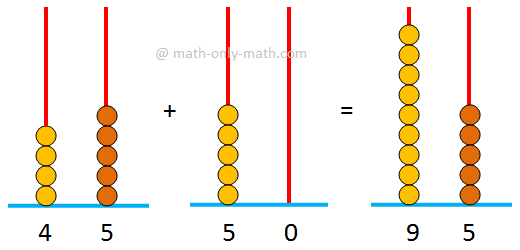Quadratic Equation cannot have more than Two Roots
We will discuss here that a quadratic equation cannot have more than two roots.
Proof:
Let us assumed that α, β and γ be three distinct roots of the quadratic equation of the general form ax2 + bx + c = 0, where a, b, c are three real numbers and a ≠ 0. Then, each one of α, β and γ will satisfy the given equation ax2 + bx + c = 0.
Therefore,
aα2 + bα + c = 0 ............... (i)
aβ2 + bβ + c = 0 ............... (ii)
aγ2 + bγ + c = 0 ............... (iii)
Subtracting (ii) from (i), we get
a(α2 - β2) + b(α - β) = 0
⇒ (α - β)[a(α + β) + b] = 0
⇒ a(α + β) + b = 0, ............... (iv) [Since, α and β are distinct, Therefore, (α - β) ≠ 0]
Similarly, Subtracting (iii) from (ii), we get
a(β2 - γ2) + b(β - γ) = 0
⇒ (β - γ)[a(β + γ) + b] = 0
⇒ a(β + γ) + b = 0, ............... (v) [Since, β and γ are distinct, Therefore, (β - γ) ≠ 0]
Again subtracting (v) from (iv), we get
a(α - γ) = 0
⇒ either a = 0 or, (α - γ) = 0
But this is not possible, because by the hypothesis a ≠ 0 and α - γ ≠ 0 since α ≠ γ
α and γ are distinct.
Thus, a(α - γ) = 0 cannot be true.
Therefore, our assumption that a quadratic equation has three distinct real roots is wrong.
Hence, every quadratic equation cannot have more than 2 roots.
Note: If a condition in the form of a quadratic equation is satisfied by more than two values of the unknown then the condition represents an identity.
Consider the quadratic equation of the general from ax2 + bx + c = 0 (a ≠ 0) ............... (i)
Solved examples to find that a quadratic equation cannot have more than two distinct roots
Solve the quadratic equation 3x2 - 4x - 4 = 0 by using the general expressions for the roots of a quadratic equation.
Solution:
The given equation is 3x2 - 4x - 4 = 0
Comparing the given equation with the general form of the quadratic equation ax^2 + bx + c = 0, we get
a = 3; b = -4 and c = -4
Substituting the values of a, b and c in α = −b−√b2−4ac2a and β = −b+√b2−4ac2a we get
α = −(−4)−√(−4)2−4(3)(−4)2(3) and β = −(−4)+√(−4)2−4(3)(−4)2(3)
⇒ α = 4−√16+486 and β =4+√16+486
⇒ α = 4−√646 and β =4+√646
⇒ α = 4−86 and β =4+86
⇒ α = −46 and β =126
⇒ α = -23 and β = 2
Therefore, the roots of the given quadratic equation are 2 and -23.
Hence, a quadratic equation cannot have more than two distinct roots.
11 and 12 Grade Math
From Quadratic Equation cannot have more than Two Roots to HOME PAGE
Didn't find what you were looking for? Or want to know more information about Math Only Math. Use this Google Search to find what you need.
Recent Articles
-
5th Grade Highest Common Factor | HCF | GCD|Prime Factorization Method
Mar 24, 25 03:40 PM
The highest common factor (H.C.F.) of two or more numbers is the highest or greatest common number or divisor which divides each given number exactly. Hence, it is also called Greatest Common Divisor… -
5th Grade Factors and Multiples | Definitions | Solved Examples | Math
Mar 23, 25 02:39 PM
Here we will discuss how factors and multiples are related to each other in math. A factor of a number is a divisor which divides the dividend exactly. A factor of a number which is a prime number is… -
Adding 2-Digit Numbers | Add Two Two-Digit Numbers without Carrying
Mar 23, 25 12:43 PM
Here we will learn adding 2-digit numbers without regrouping and start working with easy numbers to get acquainted with the addition of two numbers. -
Worksheet on 12 Times Table | Printable Multiplication Table | Video
Mar 23, 25 10:28 AM
Worksheet on 12 times table can be printed out. Homeschoolers can also use these multiplication table sheets to practice at home. -
Vertical Subtraction | Examples | Word Problems| Video |Column Method
Mar 22, 25 05:20 PM
Vertical subtraction of 1-digit number are done by arranging the numbers column wise i.e., one number under the other number. How to subtract 1-digit number vertically?






New! Comments
Have your say about what you just read! Leave me a comment in the box below. Ask a Question or Answer a Question.